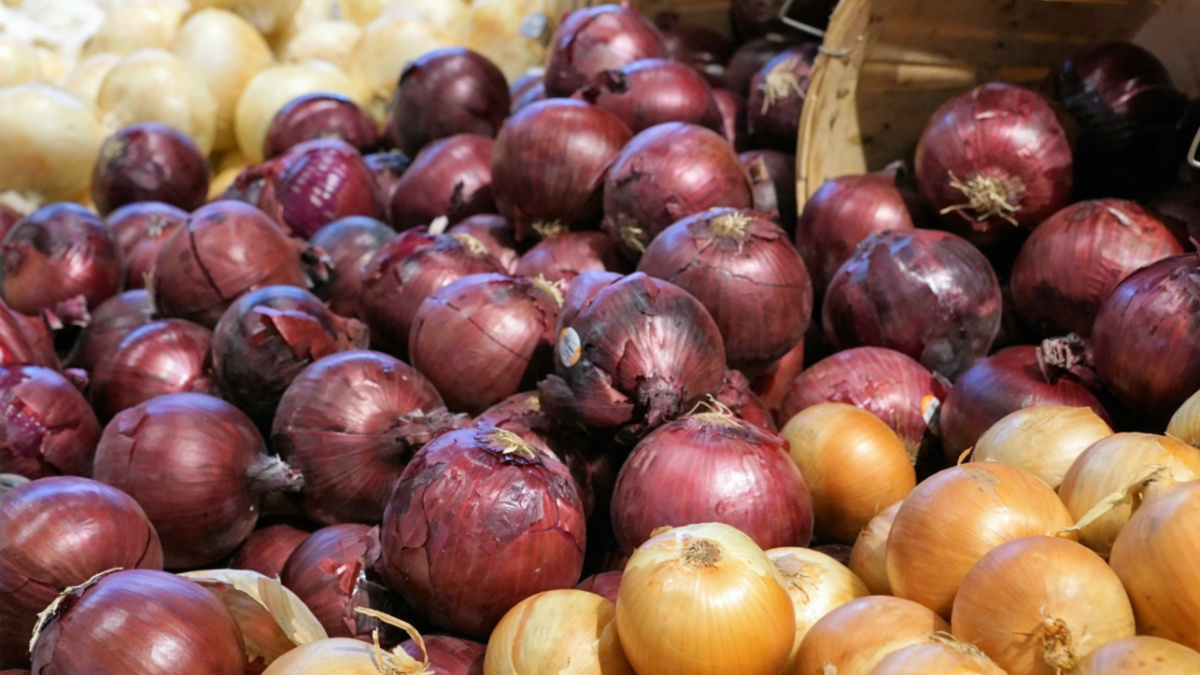
Salmonella Outbreak Linked to Onions Spreads to 43 States and Canada

The recalled list includes red, yellow, white and sweet yellow onions, which may be tainted with salmonella. Pxhere
Nearly 900 people across the U.S. and Canada have been sickened by salmonella linked to onions distributed by Thomson International, the The New York Times reported.
The outbreak reached 43 states and 7 provinces in Canada by the end of Sunday, forcing major retailers, including Trader Joe’s, Giant Eagle and Publix, to remove onions from their shelves. The outbreak is likely to continue spreading as onions were shipped to all 50 states from the Bakersfield, California-based food distributor, according to Ars Technica.
It is possible that an increasing number of cases will be reported over the next few weeks due to the lag between when a person gets sick and gets tested, then having an agency report the illness, Martin Wiedmann, a food safety professor at Cornell University, told The New York Times.
A CDC map of the outbreak identifies 640 cases across the country, with Utah, Oregon and California showing the largest number of cases. The recalled list includes red, yellow, white and sweet yellow onions.
The major chains that carried the onions also include Walmart, Kroger, Fred Meyer, Food Lion and H-E-B. According to a statement Friday from the Centers for Disease Control and Prevention (CDC), the onions were sold under the following brand names: Thomson Premium, TLC Thomson International, Tender Loving Care, El Competitor, Hartley’s Best, Onions 52, Majestic, Imperial Fresh, Kroger, Utah Onions and Food Lion.
The CDC asked people to proceed with extreme caution. “If you used onions to make any other food and don’t know where the onions were from, don’t eat the food. Throw it away, even if some of it was eaten and no one got sick,” the CDC said. It added, “Wash and sanitize any surfaces that may have come in contact with onions or their packaging, such as countertops, storage bins, refrigerator drawers, knives, and cutting boards.”
The CDC also urged customers to ask restaurants about the source of their onions before ordering at a restaurant or any food shop. In Oregon, five people were sickened after eating at Si Casa Flores restaurant in Grants Pass, according to ABC News affiliate KDRV.
“We have been working closely with the managers and staff at Si Casa Flores to ensure the continued safety of its customers,” said Mike Weber, the County Public Health director. “This restaurant has done everything right in this unfortunate situation, and customers should feel safe dining there. I recently enjoyed a meal there myself.”
“People who believe they’ve gotten diarrhea from consuming red onions might want to contact a health care provider,” Emilio DeBess, an epidemiologist at the Oregon Public Health Division Acute and Communicable Disease Prevention Section, told KDRV. “However, most people with salmonellosis will recover without antibiotics.”
U.S. infections started in late June, the CDC said. All ages have been affected, with a median age of 39. Women account for fifty-four percent of those sickened. No deaths have been reported in the U.S. or Canada.
The Public Health Agency of Canada announced 239 cases with 29 hospitalizations as of Friday, The New York Times reported.
According to the CDC, salmonella is a bacteria that can cause salmonellosis, and most human infections are caused by eating food contaminated with it. Salmonellosis can lead to diarrhea, fever and abdominal cramps. These symptoms usually appear within three days after becoming infected and usually resolve within four to seven days.
In some cases, the infection may spread to the bloodstream and other parts of the body. These cases are associated with more severe diarrhea, which can lead to hospitalization. Severe cases can be deadly if not treated promptly with antibiotics.
- Meat Producers Issue Massive Recalls after Salmonella, Listeria ...
- Salmonella Outbreaks Could Worsen with Decreased Poultry ...
- Major Salmonella Outbreak Exacerbated by Government Shutdown ...

 233k
233k  41k
41k  Subscribe
Subscribe 